Since the first Electrical Vehicle, all the critics have raised a single most important question. “How are you comparing an EV to a regular car if it takes 7 hours to charge for 500kms of range.” At current times a normal sedan of battery 100 kWh capacity takes up to 1 to 2 hours charge with supercharging. As there are more efficient and faster EV’s, people are opting to buy an EV rather than an ICE vehicle. This inevitably is going to lead to crowding of charging stations. Therefore, the only viable solution for it is to develop a better, faster, and efficient charging system. So, let’s have a look at how future Tesla wireless car charger would work.
Tesla’s Move to Wireless Charging
The Tesla “WAVE”
Based on various tweets and rumors, Tesla, the leader of the EV race, is developing something called “WAVE”. “WAVE”, is an acronym for Wireless Advanced Vehicle Electrification. This is owned by NASDAQ-listed company Ideanomics. WAVE proposes an extremely fast wireless charging system that would provide speeds of 500 kW and 1 MW. They propose to charge the car while driving directly into the roadway, providing power without having to the plugin. This system will be implemented in the Tesla Semi, as the company develops this charging system for medium and heavy-duty cars.
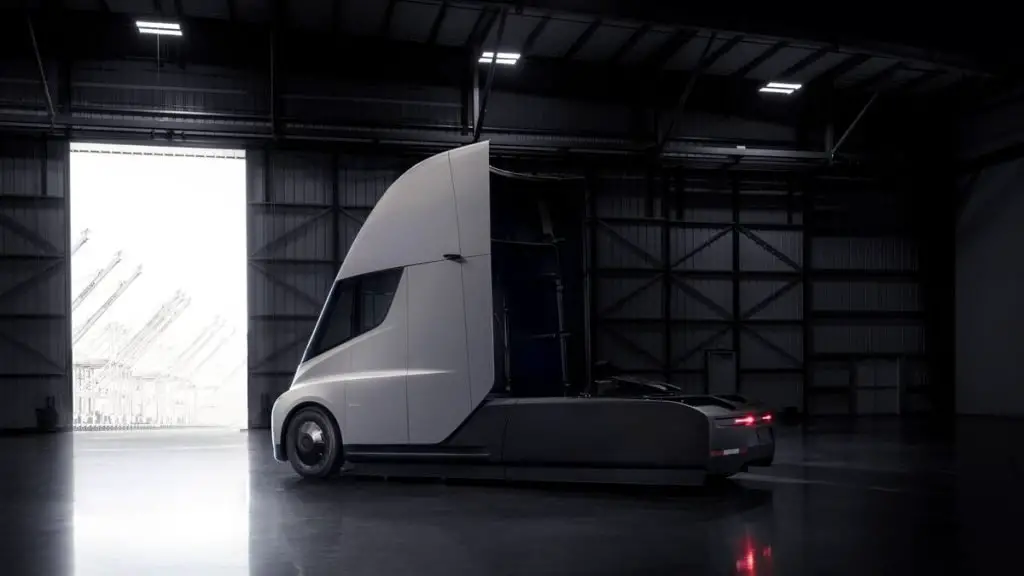
A word from the company
WAVE specifically mentions the strengths of the system and how it could benefit the Tesla Semi, in particular. The document states:
“The current state-of-the-art drayage truck charging features primarily conductive chargers. The recently announced Tesla Semi concept design has the largest advertised range of 500 miles with a target 80% charge in 30 minutes. The battery pack is estimated to be at least 800 kWh and must have a target charge rate of approximately 1.5 MW. The system under development via the US DOE contract of charging an electric drayage truck at extreme fast-charging power levels will be the fastest charger by a significant margin.”
$IDEX The WAVE W-XFC is mentioned here with the advanced battery pack for the Tesla Semi as an example
-This very high power wireless charging system, COUPLED w/ AN ADVANCED BATTERY PACK that supports high rate charging will allow MD/HD trucks/buses to be charged in 20-30 minutes pic.twitter.com/yPtuD0VhyM— Konahuanui Investments (@konahuanui) August 6, 2021
Working of the Wave
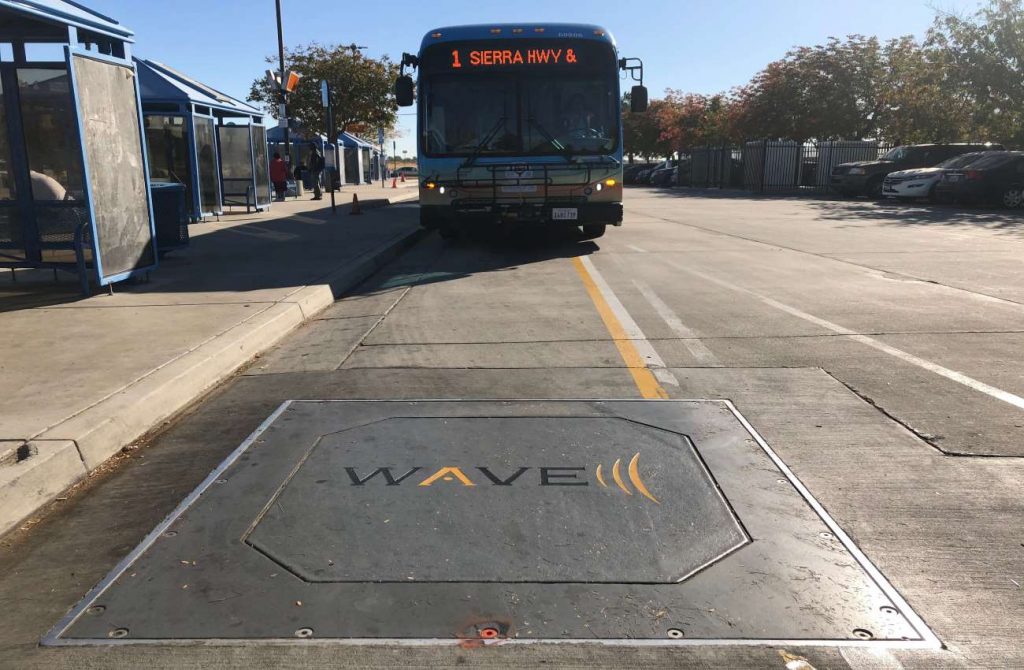
According to the company, the next logical step is to find solutions like wireless charging to not hold the fleets at charging stations. Currently, WAVE has provided solutions with a 250 kW capacity. It can transfer up to 250 kW for bus charging. Although there is a gap of 10 inches or 250 millimeters, yet the bus is charging at a faster pace without any issues. But for charging Electric Vehicles faster they have come up with a solution. There are several plans by WAVE to increase their capacity. “This is achieved by using a scalable modular approach. For this project, WAVE will increase the power level to 500 kW”. The power can be transferred from the primary coil and receiving coil using magnetic fields. To convert high-frequency AC currents the resonant inverter is used. Then the energized coil provides charging to the coil underground of the truck.
How Wireless Charging Work for Tesla Cars
How does Wireless Power Transfer work in EV’s
With the current situation of EV charging, adding Wireless Charging to the mix will make it more attractive for customers. As it would overcome customer’s range anxiety for EV’s. 2 components are mainly required for wireless charge transfer in EV’s. Namely a charging pad on the floor and another pad on the underside of the vehicle. When the car is on a charging pad and aligned, electric vehicles rely on resonant magnetic induction to transfer energy between the two. A typical charging pad is around one square meter in size. On the other hand, the receiving coil is very compact and is usually under the car.
These Wireless charging mats can be embedded in road surfaces placed at places convenient to the owner. The wireless charging pad recognizes when there is an EV over it and starts charging automatically. Similarly, you can just drive away from the pad without any physical intervention to terminate the charging. Places like malls, movie theaters, supermarkets are the best location to place these mats. As it will charge the car automatically till the time the owner finishes up his/her work.
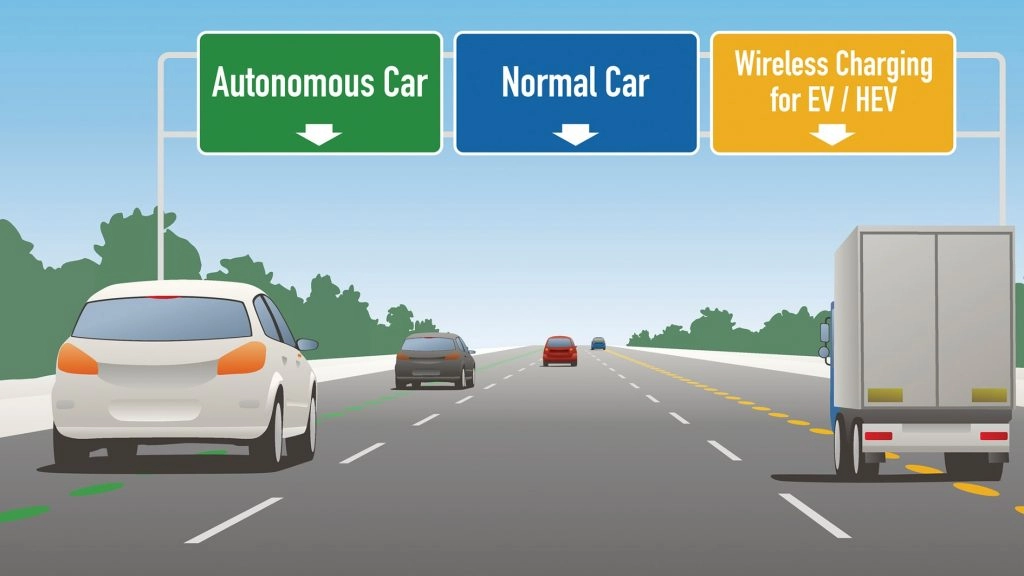
Dynamic Wireless Electric Charging Stations (D-wevcs)
D-wevcs is another form of wireless power transfer. These D-wevcs, can be embedded in the roadways. These charges the EV’s as the cars travel over them. D-wevcs are the perfect option for EV’s which are used for public transport, as they cannot afford to stop at charging stations for a few hours.
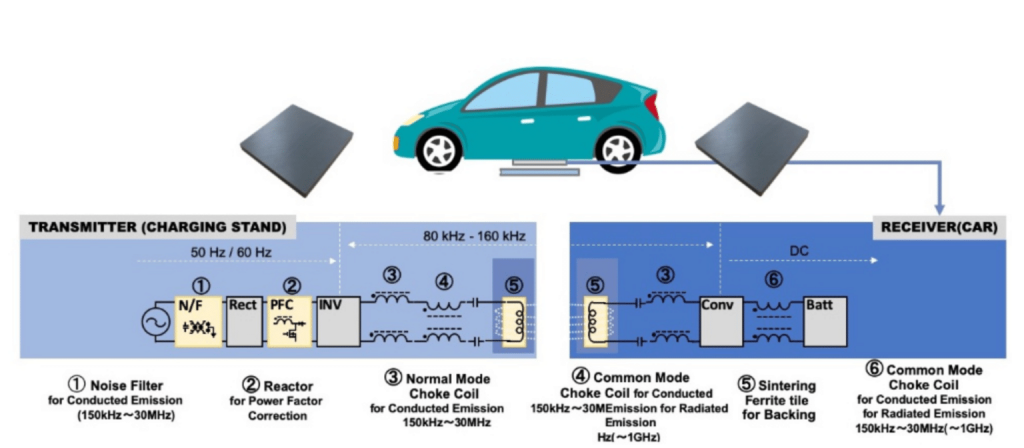
1 = Noise filter for conducted emission; 2 = Choke for power factor correction;
3 = Normal mode choke coil; 4 = Common mode choke coil;
5 = Sintered ferrite carrier; 6 = Common mode choke coil.
The following is a block diagram for D-wevcs charging. An AC power supply of 50 to 60 Hz is used to power the transmitter. To correct and rectify the power factor an invertor is used. It gives an output AC of 80 to 160 kHz. This is transmitted to the wireless power transmitter coil. This power is then transferred to the magnetic receiving coil which is placed on the underside of the car.
Perfecting Wireless Charging
Wireless charging for cars is not a new concept. But still, it hasn’t been perfected yet. Efficiency and reliability of this charging method is the main concern. There is a chance of them overheating with a constant discharge and charge from the receiver and charging port. Additionally, with constant high-speed power transfer, neither the car’s battery life nor the charging port can be long-lasting.
The receiving coils in cars for power transfer are both big and heavy. Due to this, the battery size of the EV reduces. With new materials that enable the development of more compact components, the size and weight of the system mounted on the vehicle can also be reduced.
Another Concern for D- wevcs is perfecting the coupling between the car and the charging port. suppose the car is misaligned by a little due to traffic or irregular parking, still, the mat should be efficient enough to inductively couple with the receiver. The dependency on the orientation of the transmitter and receiver can be reduced by improving the design and layout. A moveable receiving coil is a solution for this. With an efficiency of 90%, charging of 5kWh is possible.
Conclusion
Although Tesla already has its Supercharging Grid, which by the way they plan to open up for other EVs. It still takes a lot of time to charge as compared to just refueling a car with diesel or petrol. The Wave technology, although a good solution, must be tested vigorously through various conditions. Big EVs like trucks and busses have big batteries. Wirelessly charging such big batteries at a high speed is risky. As it may cause the batteries, the receiver to heat up and degrade faster over time. However, with the right precautions, and measures we can develop a system that can charge extremely fast in a short amount of time. This will be groundbreaking and something necessary for the future of EVs.




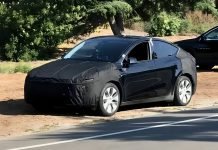













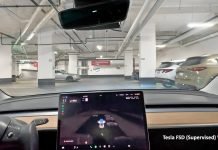
Love it especially practical if implemented into parking lots it makes total sense.
On the surface, it makes great sense. The actual physics of it … a bit more challenging than this short article goes into. MW charging via cables is already in the works. Higher voltage packs allow faster charge rates. But the battery packs can still only charge so fast. It’s easy to couple MW’s of power via coils ( there are tens of thousands of them called “transformers” ). But to do it safely, efficiently and consistently- there’s the difficult part. Lots of research ongoing around wireless so, as always, time will tell.